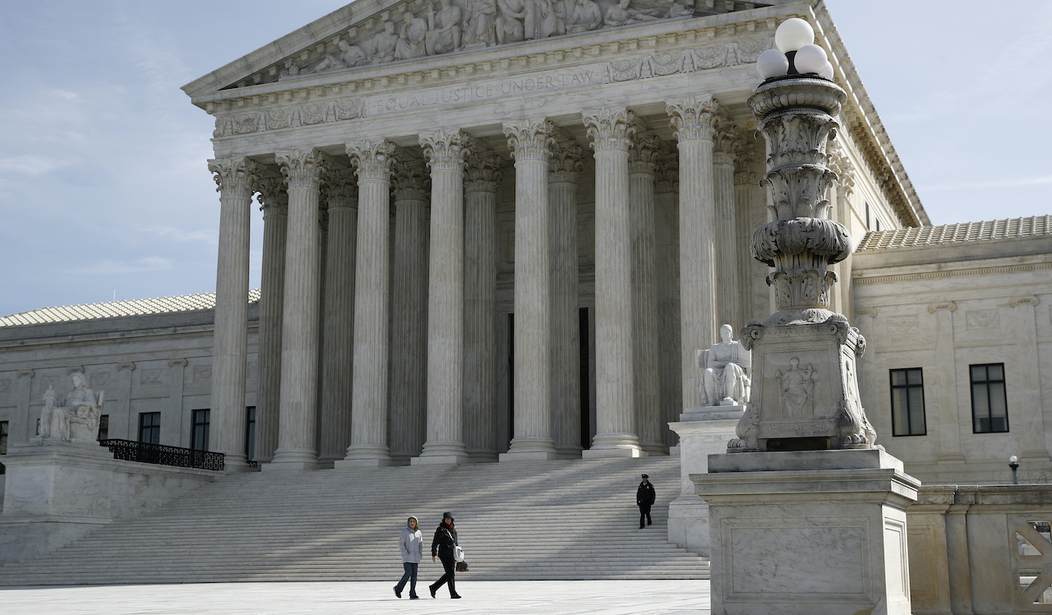Domestic violence restraining orders are all over the gun news these days. After all, arguments were just presented before the Supreme Court in US vs Rahimi, which has been a frustrating case.
It’s been frustrating because the media keeps misrepresenting what it’s about. It’s not about taking gun rights from domestic abusers, but about them being taken from people who haven’t been convicted of any such crime.
But I suppose I shouldn’t blame the media too much.
Most of them aren’t well versed on the subject, for one thing. They rely on information from other sources and the government had a vested interest in presenting it that way to the media. They should have done some digging themselves, but that’s too much like doing their jobs.
Besides, lying about this has gotten to be such a thing it looks like the US solicitor general just did the same thing to the Supreme Court.
Judge James C. Ho amplified that point in his concurring opinion. Ho said protective orders are “often used as a tactical device in divorce proceedings,” “are granted to virtually all who apply,” are “a tempting target for abuse,” and in some cases have been used to disarm the victims of domestic violence, leaving them “in greater danger than before.”
During oral arguments on Tuesday, [U.S. Solicitor General Elizabeth] Prelogar suggested these problems are figments of Ho’s imagination. She claimed that Section 922(g)(8), which makes gun possession a felony punishable by up to 15 years in prison, “requires individualized findings of dangerousness.” But that is clearly not true.
To trigger the loss of Second Amendment rights under this provision, a restraining order must be preceded by a hearing of which the respondent “received actual notice.” That order can include a finding that the respondent poses “a credible threat,” which fits Prelogar’s description. But such a finding is not necessary as long as the order “explicitly prohibits the use, attempted use, or threatened use of physical force.”
Because the first option “requires a judicial finding of dangerousness, it does not infringe the Second Amendment,” gun policy scholar David Kopel argues in a brief opposing the government’s position. But the second option “does not require such a finding,” he says, so it “is an infringement.”
Wilson described language regarding the use of force as “boilerplate” commonly included in divorce-related restraining orders that can be readily obtained even when the respondent has “no history of violence whatever.” In response to that criticism, Prelogar said judges are supposed to use such language only when it is justified by the facts of the case.
To support this, Prelogar argued that two-fifths of the applications in the county where Rahimi originated were rejected.
But does that really support Prelogar’s assertion?
Not really.
As you might suspect, those numbers from one county in one state for one year do not tell the whole story. In New York City, the Bronx Defenders Union (BDU) and the National Association of Criminal Defense Lawyers (NACDL) report in their brief supporting the challenge to Section 922(g)(8), “judges issue orders of protection without any finding of dangerousness or violence and without affording the accused any due process.” The targets of those orders have no “meaningful opportunity to contest the underlying allegations.” In short, the brief says, “the Government’s claim that the orders of protection target solely dangerous abusers is completely contradicted by the daily reality in New York’s courts.”
The truth is that restraining orders are often issued simply because someone is concerned. Divorces are stressful situations and people get loud. It’s not unusual for people to decide to apply for a restraining order just to be safe.
Others may do it for strategic reasons, possibly feeling like applying such an order will predispose the family court judge to view them favorably.
Regardless, if people are getting hit with restraining orders without a finding of actually being dangerous, there’s a big problem.
Zackey Rahimi was dangerous. He went on to commit other violent offenses after the restraining order was issued. I don’t think anyone really cares about Rahimi as a person, though.
What matters is that most restraining orders are issued over someone simply being worried. They’re afraid someone might become dangerous, even if there’s no evidence they will.
From there, they end up having to pony up money for an attorney because, despite them possibly losing their rights over this, they don’t get a court-appointed attorney. In some states, they face also having to pay the other party’s legal fees if they lose, and through it all, most don’t even know they could lose their right to keep and bear arms.
So most don’t even fight it, even if they know it’s BS.
For Prelogar to stand there and tell the Court that there has to be a finding of dangerousness is either a lie or she doesn’t know what she’s talking about in the least. Yet she can’t do like the media does and coast on the official narrative. She’s required to do some research in order to prepare a case, which means she knows the truth.
She just hoped the justices wouldn’t realize that she was misrepresenting that truth to them.







